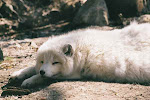
Saker Falcon
Scientific Name: Falco Cherrug
Description:
Saker falcons are large birds of prey. They are 8 inches tall. Saker falcons range in color. Some can be dark brown, gray, almost white, and pale brown. Saker falcons have large feet and a large wingspan. They are bigger than peregrine falcons, and they have pointed wings. They have large eyes and a short, pointed beak. Saker falcons are an endangered species. Saker falcons can dive downward at 200 miles per hour.
Ste
 ppe Biome: Saker falcons live in the Steppe biome. The Steppe biome is dry and cold, and is between a forest and a desert. People are digging for oil and farming in the Steppe biome, so this biome and its animals and plants are endangered. The Steppe biome has really cold winters, and warm summers. The average rainfall is 10 to 30 inches a year.
ppe Biome: Saker falcons live in the Steppe biome. The Steppe biome is dry and cold, and is between a forest and a desert. People are digging for oil and farming in the Steppe biome, so this biome and its animals and plants are endangered. The Steppe biome has really cold winters, and warm summers. The average rainfall is 10 to 30 inches a year.Habitat:
As we learned earlier, Saker Falcons live in the Steppe biome. They originated in Asia and southeast Europe. They are found in the forest and open plain steppes. They are found in southern Siberia, Mongolia, and the Russian Altai mountains.
Saker falcons migrate to the Middle East and Kazakhstan.
Diet:
Saker falcons eat birds, weasels, rats, stoats, voles, Siberian chipmunks, feral pigeons, and ground squirrels. Because of global warming, the Saker falcon's preferred prey, the red-cheeked sousliks, which is a kind of ground squirrel, lost the vegetation they relied on and became extinct. Now, Saker falcon numbers are declining.
Predators:
Saker falcons don't have any natural predators. Their only predator is people. People are destroying their home, and people are the culprits to the extinction of the red-cheeked sousliks.
Babies and Nest:

Saker falcons have 2 to 6 eggs. Saker falcons usually don't make their own nest. They usually use nests built by other birds, like storks, ravens, buzzards, or black kite nests. Saker falcons nest on trees and cliffs.







.jpg)





